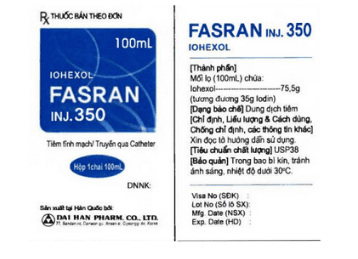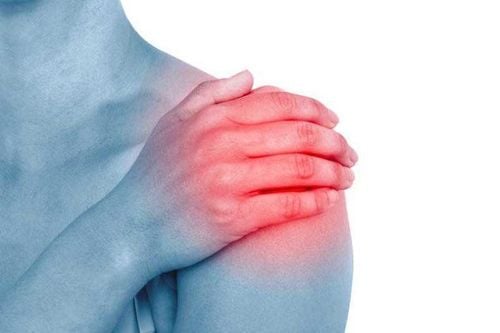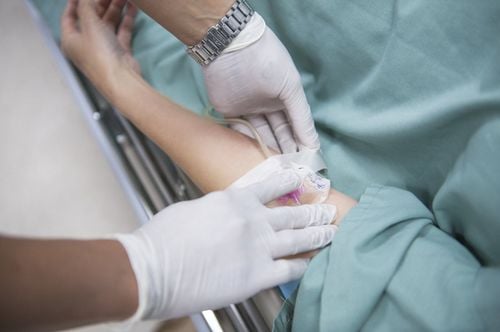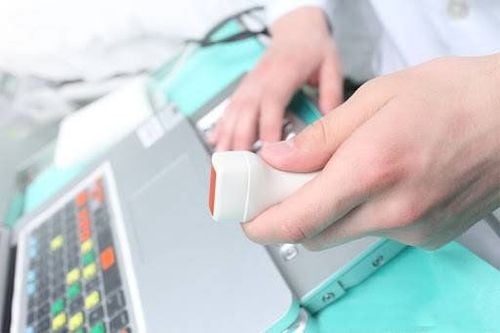This is an automatically translated article.
Posted by Resident Doctor, Master Tran Duc Tuan - Department of Diagnostic Imaging - Vinmec Central Park International General HospitalSubarachnoid stenosis is a relatively common condition, accounting for 45-60% of shoulder disorders. The disease causes symptoms of shoulder pain, limiting shoulder movement, affecting the patient's quality of life.
1. What is subarachnoid stenosis?
Subarachnoid space stenosis syndrome is a condition in which the space between the scapula and the tendons of the rotator cuff muscle is narrowed. Subarachnoid space stenosis may result from one or more of the following:Extrinsic compression of the rotator cuff tendon structures of the shoulder joint. The rotator cuff tendon is made up of 4 muscles: the supraspinatus, the subspinal, the subscapular, and the minor rotator cuff. The rotator cuff tendon is located between the crest of the humerus and the anterior part of the scapular process, the cruciate ligament, and the sacroiliac joint. Subarachnoid space stenosis may be due to subarachnoid compression or external trauma to the rotator cuff tendon structures of the shoulder joint. Intrinsic degeneration of tendons: The degenerated supraspinatus muscle disbalances the humerus head with the socket, causing excessive displacement of the humerus head, leading to narrowing of the subarachnoid space. Subscapular stenosis may be caused by inflammation of the subarachnoid bursitis and surrounding ligaments. In addition, some other causes such as: retraction of the capsule behind the shoulder joint, hook-shaped crow, shoulder instability,...
Narrowing of the space below the apex of the shoulder is one of the common causes of shoulder pain. accounting for 45-60% of shoulder disorders. The disease often occurs in people who play sports that have to put their arms above their heads or workers who have over-the-head arm movements. People with stenosis of the subacromial space of the shoulder have symptoms of shoulder pain with features such as increased pain when performing shoulder movements, lifting arms above the head, lifting heavy objects, and limited range of motion of the shoulder joint. . The patient has a lot of pain at night but responds poorly to conventional painkillers, the pain makes the patient wake up and lose sleep.

2. How to diagnose subarachnoid stenosis?
To diagnose stenosis of the subarachnoid space, the doctor will ask about the patient's history, occupation, living habits, and the nature of the pain. Your doctor will perform a physical exam to look for signs of subarachnoid stenosis. To confirm the diagnosis, the doctor will assign the patient to perform a number of imaging methods such as:X-ray of the shoulder joint: An effective method to find abnormalities in the bone structure or signs of arthritis. X-ray film can identify the patient's lower apex than normal, causing narrowing of the subacromial space. X-rays also help detect bone spurs. Magnetic resonance imaging (MRI): Doctors often order MRI when suspecting that a patient has a rotator cuff tear, tendonitis, or a disease in the parietal cartilage. Shoulder ultrasound: helps to detect rotator cuff tear. In addition, to distinguish the syndrome of stenosis of the subacromial space from the diseases of the neck that cause pain in the shoulder joint, the doctor will perform the following karma: inject a certain amount of anesthetic into the subacromial space, If the patient relieves pain immediately, the cause of shoulder pain is due to narrowing of the space below the apex of the shoulder.
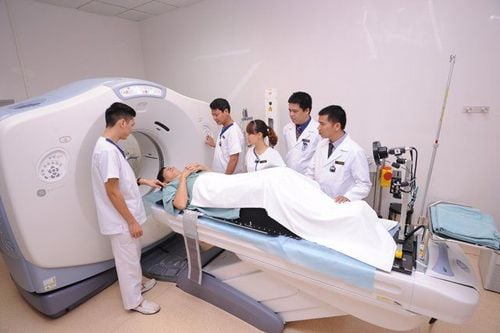
3. How is the stenosis of the subarachnoid space treated?
3.1. Medical treatment In the early stages of the disease, doctors often prescribe medical treatment with pain relievers, anti-inflammatory drugs combined with ice, rest,... In some cases, doctors can irradiate with pink rays. externally to increase blood flow to the tissues in the shoulder joint. When the patient's pain is relieved, physical therapy exercises will be performed.The doctor may prescribe an injection of steroid anti-inflammatory drugs directly into the subacromial space if the above measures do not work. However, because steroid drugs have many side effects, it is very important to weigh the benefits and risks when using.
Injections of hyaluronic acid or platelet-rich plasma are new treatment options that may be used in some cases, but their effectiveness has not been well studied.
3.2. Surgical treatment If there is no improvement after 4-6 months of medical treatment for subarachnoid compression, the doctor may consider surgery for the patient. There are two surgical methods: open surgery and laparoscopic surgery. The goal of surgery is to repair the damage and relieve pressure on the bursa and rotator cuff. Widen the space between the sacral process and the rotator cuff tendon by cleaning the degenerative lesions, bony shoots, and part of the sacroiliac process. At the same time, restore the damaged rotator cuff tear if any. Laparoscopic surgery is now commonly used due to its many advantages such as fast execution time, pain relief, reduced hospital days, and high aesthetics.
After surgery, the patient will be hanging or wearing a brace to immobilize. After that, the patient will be given physical therapy to avoid stiffness and restore mobility.
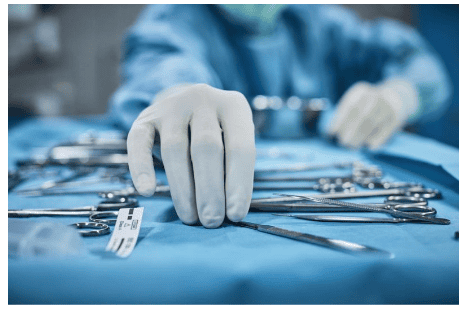
Currently, Vinmec International General Hospital has been and continues to be fully equipped with modern diagnostic facilities such as: PET/CT, SPECT/CT, MRI, ultrasound, X-ray..., testing blood marrow analysis, histopathology, immunohistochemistry, genetic testing, molecular biology tests, as well as a full range of drugs to treat diseases. Accordingly, the process of examination and accurate diagnosis of the disease is carried out by experienced and qualified doctors.
After having an accurate diagnosis of the disease and stage, the patient will be consulted to choose the most appropriate and effective treatment methods. Especially, now to improve service quality, Vinmec also deploys many packages of general health check-up that can detect diseases early for timely examination and treatment.
To be examined with a team of experienced and specialized specialists at Vinmec, you can contact and book an appointment at the website.
Please dial HOTLINE for more information or register for an appointment HERE. Download MyVinmec app to make appointments faster and to manage your bookings easily.





